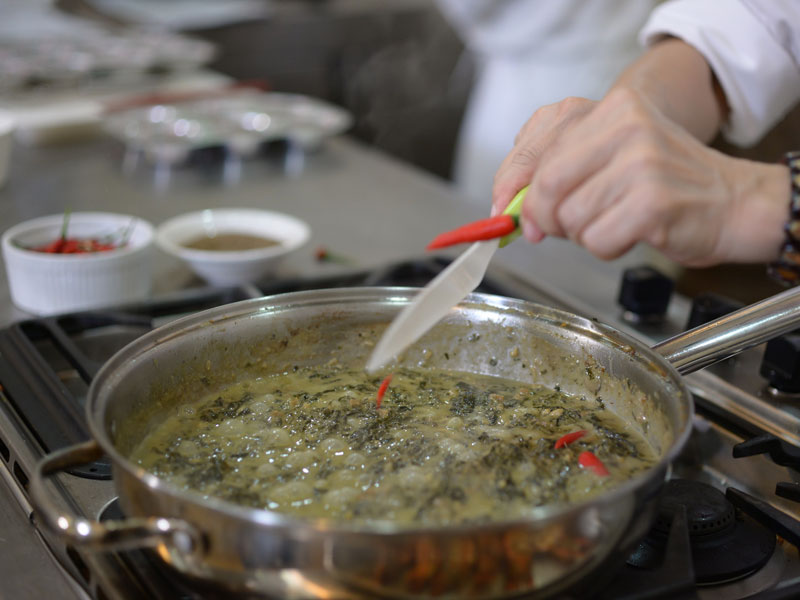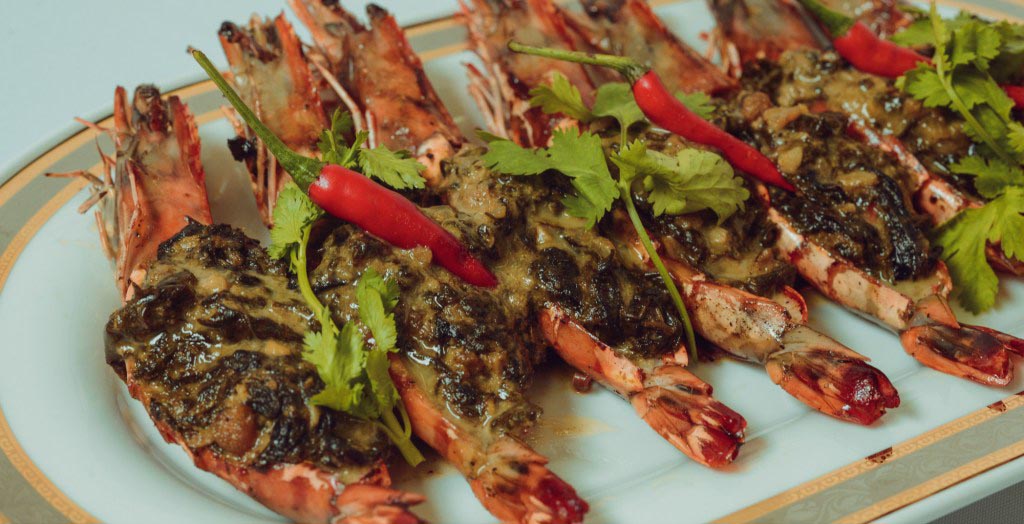Growing up in Marinduque, a picturesque island in the Southern Tagalog Region of the Philippines, Laing was a staple in our household. This humble dish, with its rich flavors of taro leaves simmered in coconut milk, symbolizes both simplicity and abundance. In this post, I share not just a recipe but a piece of my heritage, perfect for moms seeking to introduce authentic Filipino cuisine to their family table.
Laing is a classic Filipino dish of taro leaves in coconut milk that delivers big flavor with surprisingly very cheap ingredients perfect to feed the whole crew. Rraditionally a Bicolano specialty, Laing is surprisingly straightforward to make, yet it delivers complex flavors.
My childhood memories are filled with days where our backyard’s abundance of gabi (taro leaves) and coconut turned into this comforting dish. Laing’s beauty lies in its flexibility. My mother used to put either fresh seafood, cheap sardines fish, or balaw – the small shrimps to make Tinoto – also a taro dish that is unique to Marinduque. Whether you have fresh seafood or pantry staples like canned fish, this dish adapts beautifully. I fondly recall how canned sardines, a seemingly ordinary ingredient, were a delightful treat in our Laing. Sometimes, when nanay had some extra money, she’d add in cans of sardines (the irony hahaha!). No, really, that’s how it is in the province. I grew up thinking that the canned sardines were somehow more special than the fresh fish.
All that to say that this Laing recipe is not really new to me. It’s a common dish in the Southern Tagalog region, with Bicol commonly mentioned as the origin of the dish.
So when Chef Jessie presented it at the Culinary Elite Cooking Class at the Maya Kitchen, I was a bit curious how she would present the laing to become an “elegant” part of her Filipino Christmas Menu since this is just common food for a lot of us. I was not disappointed – the presentation was great! I was also inspired and now, I always think of creative ways of presenting Filipino food at the table. You can definitely add this recipe to your Pinoy Christmas table and your guests will not be disappointed.

Chef Jessie’s Laing was just how we make it with the oil almost separating from the coconut milk. I loved the addition of liempo – something I have not tried before. It brought another layer of creaminess to the laing apart from the sweetish taste of coconut milk.
I wish it was a bit spicier though. As any proud Bicolano would tell you, Laing would not be complete without the fiery allure of chili peppers. The region is famous for its love of spice, and Laing is no exception. The bird’s eye chili, known locally as “siling labuyo,” brings a potent kick that ignites the senses with a tingling sensation. Balanced with the creaminess of coconut milk, the spiciness creates a delightful tension that keeps the taste buds on edge, beckoning for just one more bite.
If it was me, I would add about 10 pieces of siling labuyo. On the recipe, she only added 5, If I remember correctly. So add chili as you want. One curious thing, however, is that Chef Jessie stirred her gabi right after cooking. I grew up cooking it with the admonition to never ever stir the gabi when it is still cooking in the kakang gata (the first part of the coconut milk), or else it will be “itchy” in the mouth. So now I’m wondering if its just an old wives tale, haha!
Laing has become a culinary ambassador of sorts, representing the region’s vibrant culture and spirit. Whether served at humble family gatherings or gracing the tables on special occasions, Laing is a dish that transcends socioeconomic divides, uniting people under the banner of shared flavors and heritage.
Tiger Prawns With Laing
Ingredients
- 250 g dried yam leaves
- 100 g pork belly, cut into small strips
- 50 g ginger chopped
- 50 g garlic minced
- 50 g onion chopped
- Cream of 3 mature coconuts
- Patis
- 12 pc tiger prawns, deveined
- Siling labuyo
- parsley chopped
Instructions
- Cook pork belly in a pan with about 1 cup of water until fat is extracted. Set aside meat.
- Sauté ginger, garlic and onion in pork fat.
- Add coconut milk and cook until it boils.
- Add the yam leaves and continue cooking until half of the sauce turns to oil.
- Season to taste.
- Cut the back of the prawns lengthwise, leaving the tail and head intact.
- Grill prawn until half cooked.
- Fill cavity of the prawns with laing.
- Bake in a pre-heated oven for 5-10 minutes before serving.
- Finish off with chopped parsley and sili.


